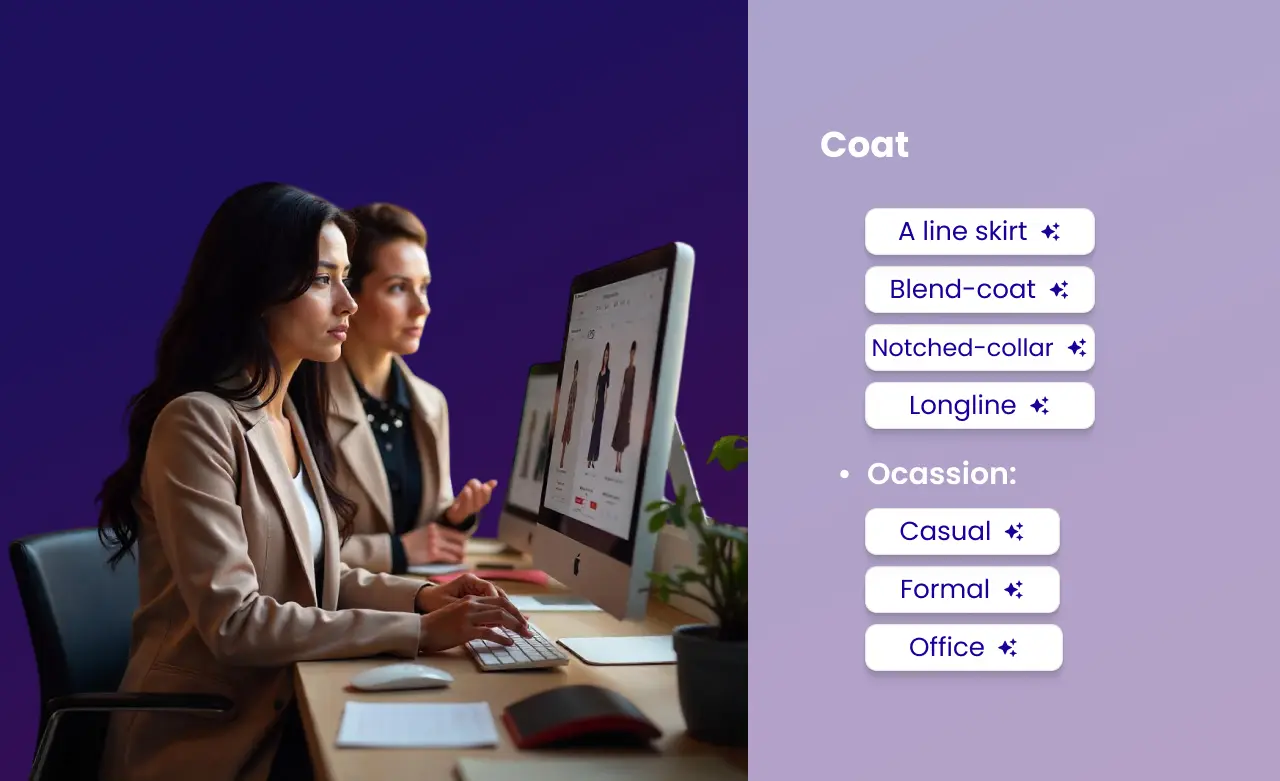Improving Site Search on Second-Hand Marketplaces with Label Data Extraction

According to a report by Thredup, the market for secondhand clothing is expected to grow by 127% by 2026.In the competitive world of secondhand shopping, it's important to make it simple for people to find what they want and boost sales. However, regular keyword searches often fail to deliver good results, leading to customer frustration when they can't find what they're looking for.
Google's data shows that 85% of shoppers think product information and pictures are important when deciding where to buy from.Taking into account the feedback from our clients and the secondhand market itself, we created a solution known as label recognition to resolve this problem. It extracts information from product labels in images, such as size, material, origin, and brand. By providing this information, you can give your customers more details about the products on your site and improve your search results.
This means more accurate recommendations, a more efficient product description generator, and a better shopping experience for your customers. To enhance the search capability of your online store and outperform your competitors, embracing our label recognition feature, is the ideal choice. Continue reading this blog to delve deeper into its benefits and learn more.
The importance of fashion labels in second-hand industry
The importance of fashion labels in the second-hand industry. As the landscape of fashion marketplaces evolves, implementing effective data extraction methods is crucial for staying competitive. Experts predict that the market for used clothing sales will reach $80 billion by 2029, almost double the size of the fast fashion industry valued at $43 billion. To keep up with this growing secondhand market, it's important to improve data input efficiency and reduce manual data entry time. This will help secondhand marketplaces increase productivity and minimize errors in product listings.
Fashion labels are crucial in this context as they quickly identify specific brands, styles, and trends for consumers, making retail product tagging an essential tool for enhancing product organization and search accuracy. They provide important information about a product, such as its brand, designer, and collection. Utilizing this information effectively can greatly improve the search experience for online businesses focused on fashion.
.gif)
Suggested read: Unlocking the Power of Label Recognition: Everything You Need to Know
There are many benefits to using an automated information extraction solution, but here are the top 7:
- Improved accuracy: Get more precise results
- Relevant search results: Find what you need more easily
- Save time: Increase employee productivity by 6 hours a week
- Cost savings: Reduce operational expenses
- Scale your business: Grow without limits
- Personalized recommendations: Discover more relevant options
- Simplify and streamline the customer experience
Now that we understand the main advantages of automated information extraction, let's take a closer look at each of them.
Benefits of extracting product information from fashion labels
Improved accuracy
By replacing manual data entry with automated product information extraction, you can significantly reduce costly errors. Machines are more reliable than humans since they don't get tired or easily distracted.
According to a study, artificial intelligence has been proven to be 30% more accurate than humans when analyzing dark matter (source). Handling large amounts of information manually often increases the risk of data entry mistakes, especially with extensive product catalogues.
Automating the process of extracting information from fashion labels ensures overall data accuracy. With precise and reliable information, you can make better-informed business decisions.
Improving search relevance
Label recognition technology offers a valuable advantage by improving the accuracy of search results. Traditional keyword-based searches often miss important details, leading to inaccurate outcomes. However, integrating label recognition into the search process can overcome this limitation.
Label recognition enables more precise and context-aware search queries. For instance, if a customer searches for a "black dress," the label recognition algorithm analyzes product images and extracts attributes like the brand, style, and fabric.
This allows the search engine to provide more accurate results, such as "Black Lace Mini Dress with Plisat Detail by XYZ brand," instead of a generic list of black dresses.

Increase employee productivity by 6 hours a week
By utilizing automated label information extraction, employees can say goodbye to manual and tedious tasks. Automation not only speeds up processes but also allows employees to accomplish more work for your core business within the same timeframe.
According to Zapier, 65% of knowledge workers experience less stress at work when they automate manual tasks. An astounding 749 billion working hours per week worldwide could be saved by automating 64% of repetitive tasks, as reported by Market Splash. In fact, a survey conducted by Smartsheet found that automating repetitive tasks can free up six or more hours per week for employees. This significant time savings equates to almost a full working day and greatly enhances productivity.
Reduce operational costs
As a second-hand marketplace, automating the extraction of label information can save you a significant amount of money. Manual information extraction requires more employee hours or even hiring additional staff to handle the manual tasks.
Growing your business with scalability
When more people start using your second-hand platform, the number of product pictures and the need to extract information from fashion labels will also grow. But hiring more employees just for this task can distract your marketplace from its main goal.
To overcome this challenge, you can switch to an automated information extraction solution. This allows your second-hand marketplace to handle a larger number of images without constantly needing to hire more staff. It helps your business scale up smoothly without compromising its focus.
Enhancing search recommendations
In addition to improving search relevance, label recognition technology can significantly enhance search recommendations. By analyzing the attributes extracted from fashion labels ,and the best second hand sites, the marketplaces can better understand customer preferences and behaviors. This information can then be used to suggest highly relevant products to customers based on their search history and the attributes extracted from labels.
For instance, if a customer frequently searches for dresses from a specific fashion label known for its bohemian style, the label recognition algorithm can identify this pattern. As a result, the search engine can provide personalized recommendations tailored to the customer's preferences, such as suggesting other bohemian-style dresses from the same label.
Simplify and streamline the customer experience
Label recognition technology also plays a crucial role in streamlining the customer experience by simplifying the search process. In the past, customers had to use text-based searches and filters to find products. But now, with label recognition, customers can easily search for products by adding specific details like size, material, brand, or origin. This helps them find more relevant results.
This streamlined approach eliminates the need for customers to describe products in text form, which can often be challenging or time-consuming. By reducing friction in the search process, second-hand marketplaces can improve customer satisfaction, encourage repeat purchases, and increase overall conversion rates.
Conclusion
In conclusion, extracting product data from fashion labels offers several significant benefits. By automating the process, you can improve accuracy and reduce costly errors compared to manual data entry. Additionally, integrating label recognition enhances search relevance, providing more precise and context-aware search results for customers.
This technology also increases employee productivity by freeing up valuable time from repetitive tasks. By cutting operational costs, automated information extraction helps you save money and streamline your business operations. Furthermore, scalability becomes achievable as your second-hand marketplace can handle a growing number of product images without the need for constant workforce expansion.
Lastly, label recognition technology enhances search recommendations and streamlines the customer experience, leading to higher customer satisfaction and improved conversion rates. Ready to experience the benefits of label recognition? Sign up and try it now to revolutionize your second-hand marketplace!
Discover Pixyle Ultimate Dress type Taxonomy Guide
Learn how to structure your catalog in a way that matches how people actually shop.


Boost your sales with AI product tagging
Optimize your eCommerce catalog to improve discovery and conversions.







